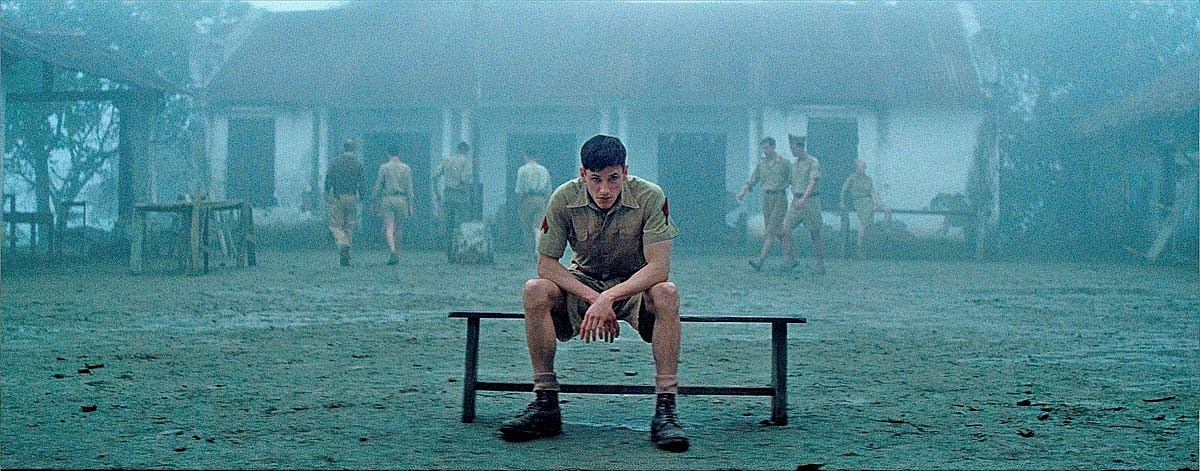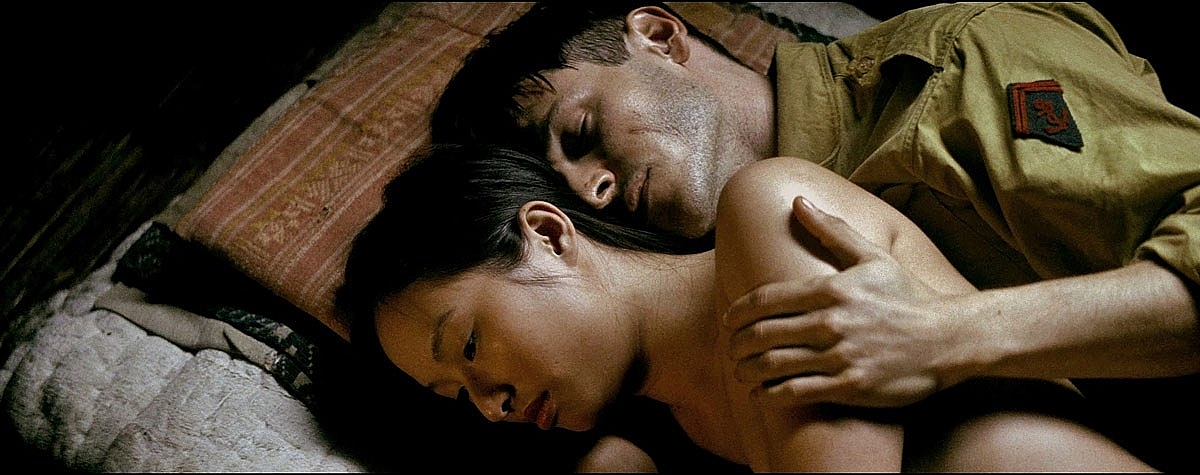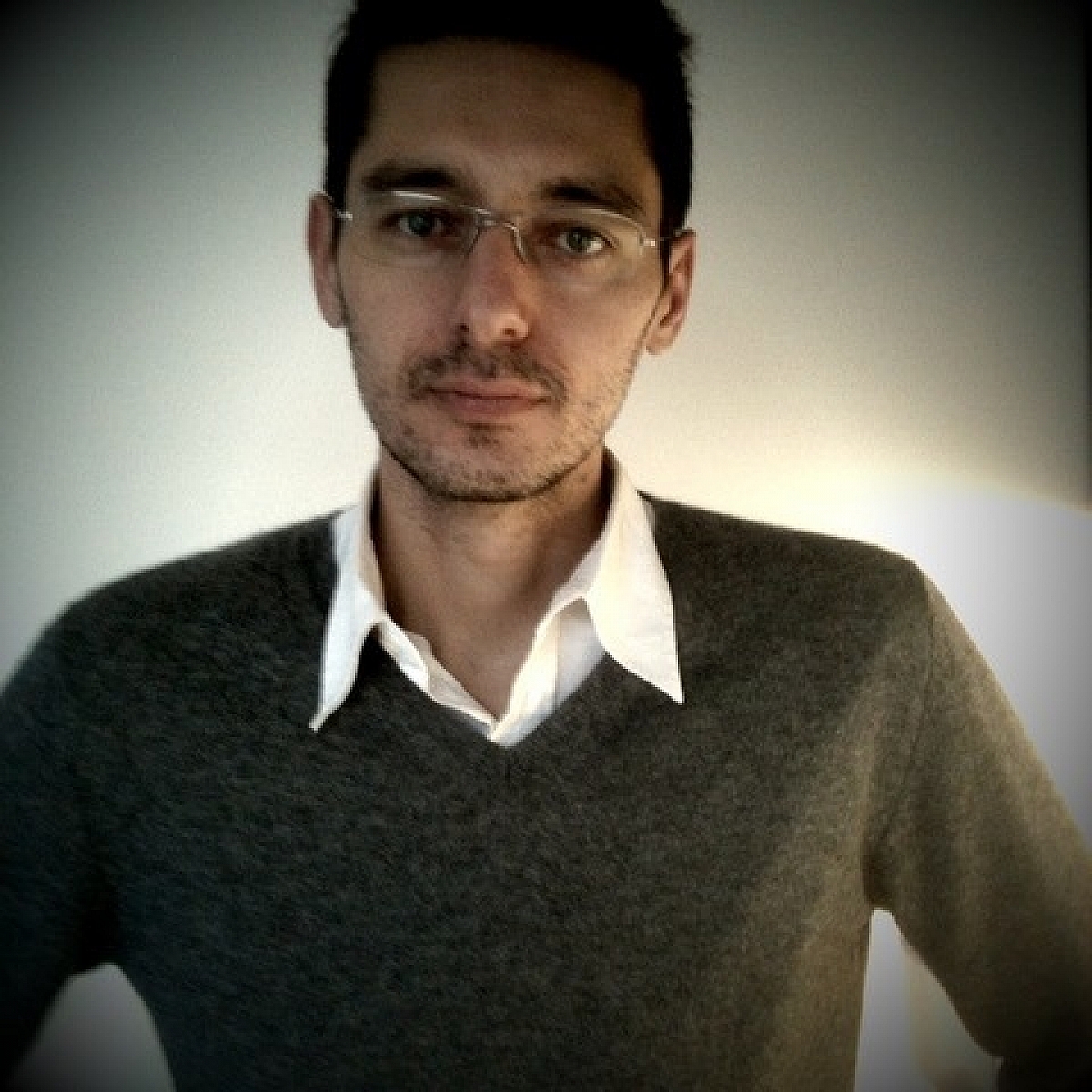Kodak 35mm delivers a poetic result on Cannes Festival screener 'Les Confins Du Monde'

Production still from director Guillaume Nicloux’s 35mm feature "Les Confins Du Monde". Image courtesy of Ad Vitam Distribution, France.
Captured on Kodak 35mm filmstocks, Guillaume Nicloux’s highly-anticipated feature Les Confins Du Monde (To The Ends Of The World) had its premiere during Directors’ Fortnight at the 2018 Cannes Film Festival. Most information about the film, which stars Gaspard Ulliel, Gerard Depardieu and actress Lang Khê Tran, was kept very much under wraps before the screening, although cinematographer David Ungaro AFC was given license to reveal some details about his artistic and creative involvement.
The film is loosely based on Erwan Bergot’s book, “Commando Vandenberghe: Le Pirate du Delta,” and was written by Jerome Beaujour and Nicloux. The action takes place in French Vietnam in 1946, and follows Robert Tassen, a young French soldier, who is the only survivor of a massacre in which his brother was killed before his eyes. Blinded by his revenge, Robert embarks on a solitary and secret search for the assassins. But his meeting, and subsequent love affair, with Maï, a young Indochinese woman, upsets his beliefs and his ultimate cause.

Production still from director Guillaume Nicloux’s 35mm feature "Les Confins Du Monde". Image courtesy of Ad Vitam Distribution, France.
The production shot for 35 days in April and May 2017, at locations in and around the city of Hanoi, as well as densely-forested national parks and mountainous regions in the north of Vietnam. The production also shot in Paris for one day.
Due to various timing issues surrounding start dates and availabilities, Ungaro says he found himself immersed in the project, “at the last minute. There was no time for testing and very little time for any prep, apart from choosing the filmstocks and going on technical recce’s with the production crew.

David Ungaro AFC, cinematographer of Guillaume Nicloux’s 35mm feature "Les Confins Du Monde".
Ungaro had not shot on film for several years, his last 35mm celluloid feature being What's In A Name(2012), directed by Alexandre de La Patellière and Matthieu Delaport.
“It was really cool coming back to film again,” remarks Ungaro. “It delivers an obvious, natural look, and I like the disciplined approach you need to take on-set. You can’t simply shoot, shoot, shoot. The crew and the actors have to be really focussed on every take.”
Although the story is set in a time of conflict, Les Confins Du Monde is not a typical or traditional war film. “It is rather a powerful emotional, human drama, focussing on the characters, and told in inimitable style by Guillaume,” Ungaro says. “There was not much discussion about the look of the film during prep. Guillaume wanted to film what was there in front of the camera in a natural way, and to let the period costume and dressed locations do the work of setting the film in 1946.”
However, for his own cinematographic purposes, Ungaro says he referenced stills by a number of renowned Mangum photographers – most notably Steve McCurry, whose body of work spans conflicts, vanishing cultures, ancient traditions and contemporary culture alike, yet always retaining the human element, and the journalistic reportage images of Bruno Barbey who, during his four-decade career traveled across five continents, photographing many wars.
The production had already been planned as an Anamorphic shoot prior to Ungaro’s attachment to it, using C-series lenses, fitted to a Panavision Millennium XL2 camera. “This was a good choice, as Anamorphic exposes nature beautifully, and gave us that extended horizontal perspective, allowing the eyes of the viewer to travel within every frame. Even faces becoming emotional landscapes,” declares Ungaro. “We shot most of the film using a 75mm Anamorphic lens, because we felt it gave us the right distance to the characters. We rapidly developed a framing language with it and saw no reason to change it. Guillaume likes to let the characters reaction to events play-out on screen, so the camera movement was minimal.”
As Les Confins Du Monde had also been devised as a film-based project, Ungaro opted for two filmstocks for the shoot – KODAK VISION3 200T Color Negative Film 5213 for daytime exteriors, with KODAK VISION3 500T Color Negative Film 5219 for most of the interiors and all of the night scenes.
“I went with the two Kodak Tungsten stocks as they give a natural look and they match well together,” he says. “I shot mainly uncorrected, as I like to keep a blue hue in the blacks. The blue of the sky during the day, and our lighting at night, filled the shadows and we always had detail in the dark areas of the image to work with later in the DI.
“I used the 500T for day interiors, as some of the Vietnamese houses we were shooting in had tiny windows, and wee therefore quite dark. I lit the nighttime scenes in the jungle with either firelight or torchlight, with some extra illumination from helium balloons for highlights. However, as the forest locations are really dark and the green foliage eats up the light, I needed an extra third of a stop, so I instructed the lab to push-process these scenes.”
Processing of the film was done by Hiventy in Paris. Remarkably, due to logistics and the director’s preference for not watching dailies, Ungaro did not see any the rushes until he returned to France after the shoot wrapped. However, the contact at Hiventy, and the editor, did report back frequently to reassure the cinematographer about the recorded image.
“Working this way means you have to have a level of confidence and trust in yourself, in the film stock, and in the lab,” Ungaro admits. “But, we actually had precious very few technical issues with the film, and it was a great surprise to eventually see the results when we got back to Paris. They were simply beautiful, especially the way film captured the natural beauty of the green foliage. I am very proud of the scenes we shot in the forest – they look amazing.”
On coming back to film, Ungaro remarks: “Film is very poetic. It’s not a clean image: film is so alive and interesting to look at. There’s a certain quality of emotion in the visual that comes from the texture of film grain. Although it was a great technical and physical challenge to shoot Les Confins Du Monde, the result is highly distinctive, and I hope it stands out from the crowd.”